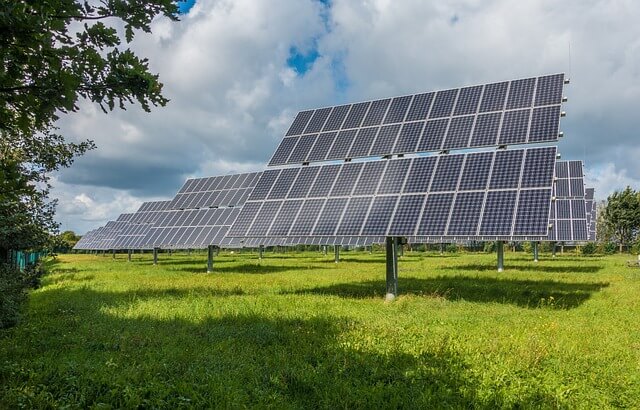Hong Kong Polytechnic University (PolyU) researchers have achieved a significant milestone in solar cell efficiency, reaching a breakthrough power-conversion efficiency (PCE) of 19.31% with organic solar cells (OSCs), also known as polymer solar cells. This remarkable advancement in binary OSC efficiency holds great potential for enhancing the application of these advanced solar energy devices.
The power-conversion efficiency (PCE) serves as a crucial benchmark, measuring the power generated from a given solar irradiation and representing a key performance indicator for photovoltaics (PVs) or solar panels in power generation. The PolyU researchers’ accomplishment of over 19% efficiency sets a new record for binary OSCs, which consist of one donor and one acceptor in the photo-active layer.
Under the guidance of Prof. LI Gang, Chair Professor of Energy Conversion Technology and Sir Sze-Yen Chung Endowed Professor in Renewable Energy at PolyU, the research team devised an innovative technique for regulating the morphology of OSCs. They employed 1,3,5-trichlorobenzene as a crystallisation regulator, leading to enhanced efficiency and stability in OSCs.
The team employed a non-monotonic intermediated state manipulation (ISM) strategy to manipulate the morphology of bulk-heterojunction (BHJ) OSCs. This strategy enables the simultaneous optimization of crystallisation dynamics and reduction in energy loss for non-fullerene OSCs. Unlike traditional solvent additive methods, which rely on excessive molecular aggregation in films, the ISM strategy promotes more ordered molecular stacking and favorable aggregation. Consequently, the PCE was significantly increased, while the undesirable non-radiative recombination loss, responsible for lower light generation efficiency and increased heat loss, was reduced.
The research team’s findings are published in the study “19.3% Binary Organic Solar Cell and Low Non-Radiative Recombination Enabled by Non-Monotonic Intermediate State Transition” in Nature Communications. The conversion of solar energy into electricity plays a vital role in achieving a sustainable environment. While OSCs show promise as cost-effective solar energy harnessing devices, improving their efficiency is crucial for wider practical applications.
The cutting-edge research on non-fullerene acceptor-based organic solar cells represents the forefront of organic photovoltaics, driven by materials and morphology manipulation innovations. Addressing the challenges associated with non-radiative recombination loss suppression and performance enhancement is central to organic cell research.
Prof. Li highlighted the research challenges posed by existing additive-based morphology control methods, which suffer from non-radiative recombination loss, resulting in lower open-circuit voltage due to excessive aggregation. After approximately two years of work, the research team successfully developed a non-monotonic ISM strategy to increase OSC efficiency and reduce non-radiative recombination loss. The publication of this study is expected to invigorate research efforts in the field of OSCs.
Prof. Li anticipates that this new breakthrough will significantly impact OSC research and create exciting opportunities, particularly in applications such as portable electronics and building-integrated PVs. Further advancements are anticipated when low-cost single-junction OSCs achieve a PCE of over 20%, coupled with improved stability and other advantages like flexibility, transparency, stretchability, low weight, and tunable color.
Prof. Li’s contributions to the field of polymer solar cells have garnered global recognition. His previous works, including the study “High-efficiency solution processable polymer photovoltaic cells by self-organization of polymer blends” published in Nature Materials in 2005, have laid the foundation for research on organic photovoltaics. Another influential study, “For the Bright Future—Bulk Heterojunction Polymer Solar Cells with Power Conversion Efficiency of 7.4%” published in Advanced Materials in 2010, has significantly impacted the
second generation of research on organic photovoltaics.
The latest study showcases a record-breaking achievement of a binary OSC with a PCE of over 19% and a remarkably low non-radiative recombination loss of 0.168 eV. Prof. Li expressed his excitement, describing it as an encouraging result after two decades of dedicated research on OSCs. The improved efficiency achieved will undoubtedly accelerate the practical applications of solar energy.

